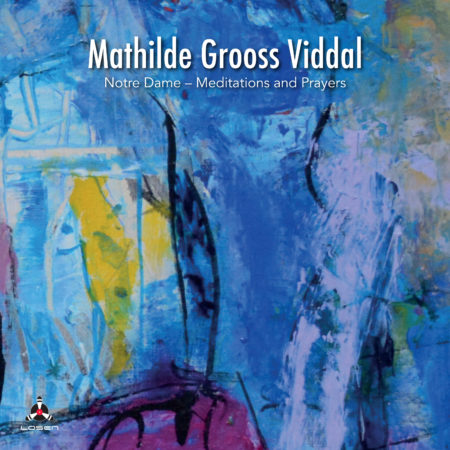Artists
Mathilde Grooss Viddal Bbclar/bass clar, soprano sax, tenor sax
Hayden Powell trumpet
Børge-Are Halvorsen tenor sax
Øyvind Brække trombone
Per Willy Aaserud trumpet & electronics, tracks 1, 7 & 13
CD info
Release No: LOS 245-2
EAN: 7090025832451
Recorded at various occasions between 2013-2016 by Jan Erik Kongshaug at Rainbow Studio, Oslo, Norway
Tracks 1, 7 & 13 recorded 2015 by Bård Thorstensen and Rasmus Solem at Færvik Kirke, Tromøy, Norway
Mixed during two periodes 2018 and 2020 by Martin Abrahamsen at Rainbow Studio
Mastered September 2020 by Morten Lund ant Lund´s Lyd, Oslo
Produced by Mathilde Groos Viddal/Girafffa Records 2020
Executive producer Odd Gjelsnes
Front cover art is a section from a painting by Ibrahim Jalal called «Paysage Norwegiene»
Digisleeve in the link below:
Download Press Release (PDF)
Kjøp plater direkte fra Losen Records. Kr 200,- per CD inkl. porto. Vipps til 99006190 og mail navn og adresse til odd@losenrecords.no
Listening to Mathilde Grooss Viddal’s Meditations and Prayers, the listener may well feel there is a timeless quality to the music. The majority of the tracks are entitled “Reflection” and “Psalm,” and these two dimensions come together on “Reflection V – Psalm 3.” These references to meditation and afterthought are also explorations of musical material, some of which has its origin centuries ago. The musicians explore this material in a soft-spoken, but at the same time intense, manner. Soft-spoken is obviously not quite the right term, as there is no speech here, although there is communication. The musical voices establish something deeply meaningful. And I can only guess that those listeners who recognize the songs used, will relate the meanings of the music with the non-heard lyrics of tradition.
That the source-material is, so to speak, hidden in the music, makes sense in this context. The hymns and folk-songs, be it “Ingen vinner frem til den evige ro,” “Det hev ei rose sprunge” (Es ist ein Ros entsprungen), “Om kvelden når det mørkner,” “Jeg råde vil alle i ungdommens dage,” or “O bli hos meg” (Abide with Me), are not here as singular compositions, but as traces of the past, as a sonic archive being reenacted, showing how the past is with us, how heritage is part of who we are, and how contemplating the past – making connections with the past – is not about striving towards something timeless, but about acting in the here and now, using the past to inform our present.
Much of the album was recorded in the legendary Rainbow Studio in Oslo in collaboration with Jan Erik Kongshaug. The framing of the album, however, was recorded in Færvik kirke, a wooden church on the island of Tromøya, where Viddal’s foremothers where waiting for heir husbands, sons, and brothers to come home from the sea. In many ways, the album feels like one long sermon, where different nuances of thought are hinted at, giving ample room for the listener to sink back into her own thoughts and reactions. Here, too, the echo of tradition gives depth to a feeling of timelessness, of being connected to foremothers and forefathers, of listening to history and tradition.
There is a long tradition of relating breath with spirit or soul in Greek “pneuma” and Hebrew “ruach.” Given this tradition, it makes sense listening to wind instruments (both woodwinds and brass), as in a particular way related to the human condition, as a way of giving sound to our basic humanness, breathing soul into the world. On this album, the instruments are affirming a core of human existence, giving us as listeners space to listen and mediate on our place in the world, a place where the echoes of past days are still here, and can be heard at each and every reiterations of a music with a long history, a music that in one sense is old, but in another sense is always also current.
Erik Steinskog, November 2020


